Occupational safety training for operating automatic labeling machines.
99,000 ₫
Note: The above price is calculated per person and may vary depending on the number of trainees participating in the course and market fluctuations. For more accurate pricing support, please refer to the pricing table or contact our consulting staff directly.
Occupational safety is an important issue when operating automatic labeling machines and needs to be addressed promptly to ensure the health and safety of workers and enhance the reputation of businesses here. The Occupational Safety Training is one of the effective solutions to raise awareness about accident prevention for workers operating automatic labeling machines.
Table of Contents
Toggle1. Overview of Automatic Labeling Machines
a. What are Automatic Labeling Machines?
Automatic labeling machines are devices used to automatically attach labels to products or packaging during the production process. These machines help increase efficiency and accuracy in labeling while minimizing human intervention and human errors. Below are some key highlights of automatic labeling machines:
Types of Automatic Labeling Machines
- Vertical Labeling Machines:
- Designed to label upright products or packaging with various shapes such as bottles, boxes, jars, etc.
- Commonly used in the food and beverage industry.
- Horizontal Labeling Machines:
- Suitable for labeling flat or horizontally positioned products or packaging.
- Ideal for labeling bags, boxes, or large packaging.
- Wrap-around Labeling Machines:
- Apply labels around product packaging.
- Mainly used for round-shaped products like bottles and cans.
- Modular Labeling Machines:
- Flexible and easily adjustable to fit different product sizes and shapes.
- Suitable for diverse production lines.

b. How Automatic Labeling Machines Work
Product Feeding
- Feeding system receives products from the production line or conveyor belt. Products are usually positioned for labeling using conveyors or sorting systems.
- Some machines integrate positioning or alignment devices to ensure products are accurately placed before labeling.
Label Position Detection
- Sensors and control systems detect the exact position where labels will be applied. Sensors can detect product size and shape to adjust the label position accurately.
- Some machines use optical sensors or cameras to identify and track products during labeling.
Label Feeding
- Label feeding system (usually label rolls) pulls labels from the roll and brings them to the labeling position.
- Label sensors or color sensors ensure the labels are properly fed and ready to be applied.
Label Application
- Labeling mechanism (usually a rotor or roller) applies the label to the product.
- Machines may use pressure technology or heat to firmly attach labels. Some machines use vacuum technology to help labels stick better.
Inspection and Finishing
- Inspection systems check label quality, ensuring correct placement and no defects.
- Some machines include reject devices to remove defective labels, ensuring high-quality final products.
Recording and Reporting
- Central control system monitors and records machine operation parameters, such as the number of labeled products, working speed, and machine status.
- User interface provides information and reports about machine status, helping operators easily monitor and adjust when needed.

c. Industries Using Automatic Labeling Machines
Food and Beverage Industry
- Bottles and jars: Labeling machines are used to apply labels on bottled products like beverages, alcohol, sauces, and oils.
- Food packaging: Labeling for packaged food items like cereal boxes, snack bags, and frozen foods.
Pharmaceutical Industry
- Medicines and medical products: Automatic labeling machines are used to label medicine boxes, bottles, and other medical products, ensuring clear information such as dosage, manufacture date, and expiration date.
Chemical Industry
- Chemical products: Labeling for chemical containers, solutions, and other industrial products. Labels must include information on ingredients, safety warnings, and usage instructions.
Cosmetics and Personal Care Industry
- Beauty products: Automatic labeling machines label cosmetics like creams, body washes, and shampoos.
- Personal care products: Labeling for soaps, shaving products, and perfumes.
Consumer Goods Industry
- Household products: Automatic labeling machines label daily consumer goods like cleaning products and detergents.
Automotive and Industrial Industry
- Parts and components: Labeling for automotive parts and industrial components, ensuring product codes, manufacture dates, and other information.
Healthcare Industry
- Medical equipment: Automatic labeling machines label medical devices and instruments, ensuring necessary information and traceability.
Retail and E-commerce Industry
- Consumer products: In retail and e-commerce, automatic labeling machines label products before distribution to stores or customers.
2. Overview of Safety Training for Operating Automatic Labeling Machines
a. What is Occupational Safety Training?
- Occupational safety training for operating automatic labeling machines consists of sessions that raise awareness about accident prevention for workers. Those who work directly with automatic labeling machines belong to group 3.
- The safety training course helps workers recognize and avoid hazards, reducing the risk of occupational accidents during work.
REGISTER FOR OCCUPATIONAL SAFETY TRAINING SERVICE
b. Training Duration
Initial Safety Training Duration
- Total training time is at least 24 hours, including testing time.
- 8 hours of theoretical study on safety policies and labor hygiene laws
- 8 hours of theoretical study on basic knowledge of occupational safety and hygiene
- 4 hours of theoretical study on specialized training content
- 2 hours of practical training on specialized content
- 2 hours of theoretical test at the end of the training course
The safety training center schedules multiple sessions depending on worker availability. Usually, there are 6 training sessions over 3 days, provided the manufacturing enterprise arranges continuous study time.
Periodic Safety Training Duration
- Before the occupational safety card expires, workers wishing to renew it must undergo a periodic occupational safety training course, with a periodic training duration at least 50% of the initial training duration.
Explanation: The total periodic occupational safety training time is at least 12 hours, including testing. After completing the periodic course and passing the test, workers will be reissued or have their occupational safety card extended.
c. Training Course Content
| No. | TRAINING CONTENT | TRAINING DURATION (HOURS) | |||
| Total | Including | ||||
| Theory | Practice | Test | |||
| I | Safety policy system and labor hygiene laws | 8 | 8 | 0 | 0 |
| 1 | Overview of the legal documents system on occupational safety and hygiene. | 6 | 6 | ||
| 2 | System of standards and technical regulations on occupational safety and hygiene. | 1 | 1 | ||
| 3 | Specific regulations from state management agencies regarding occupational safety and hygiene when constructing, expanding, or renovating facilities for production, use, storage, and inspection of machines, equipment, materials, and substances with strict occupational safety and hygiene requirements. | 1 | 1 | ||
| II | Basic knowledge of occupational safety and hygiene | 8 | 8 | 0 | 0 |
| 1 | Basic knowledge of hazardous and harmful factors in the workplace. | 4 | 4 | ||
| 2 | Methods to improve working conditions. | 1 | 1 | ||
| 3 | Safety culture in production and business. | 1 | 1 | ||
| 4 | Rights and responsibilities of employers and employees; safety and hygiene policies for workers; functions and tasks of safety and hygiene networks. | 1 | 1 | ||
| 5 | Safety and hygiene regulations, safety signs, and the use of safety equipment and personal protective equipment; first aid skills for occupational accidents, prevention of occupational diseases. | 1 | 1 | ||
| III | Specialized training content | 6 | 4 | 2 | 0 |
| Comprehensive knowledge about types of machines, equipment, hazardous substances; analysis, evaluation, and risk management of occupational safety and hygiene; safe working procedures with machines, equipment, and substances with strict safety and hygiene requirements. | 6 | 4 | 2 | ||
| IV | Safety training final test | 2 | 2 | 0 | 0 |
| Total | 24 | 22 | 2 | ||
See more training contents for all 6 groups
d. Occupational Safety Card
After completing the occupational safety training and passing the test, workers will be issued an occupational safety card (commonly called a occupational safety certificate for group 3).
The group 3 safety card clearly shows information such as full name, date of birth, specific job and working environment, training duration, red stamp, and signature confirming course completion.
According to regulations on card issuance specified in Clause 2 of Article 24 of Decree 44/2016/ND-CP, there are two cases:
- If the employer and employee have a labor contract, the employer must sign, stamp, and endorse the safety card for the group 3 worker after training completion and passing the test by the training unit.
- If the worker is freelance or temporary without a labor contract, the training unit must sign, stamp, and endorse the safety card after the worker completes training and passes the test.

3. Hazards for Workers When Operating Automatic Labeling Machines
Mechanical Hazards
- Contact with moving parts: Automatic labeling machines often have moving parts such as rollers, conveyors, and labeling mechanisms. Workers may get caught or collide with these parts if not careful.
- Risk of getting trapped inside the machine: During maintenance or repair, there is a risk of being trapped or injured if the machine is not completely stopped.
Electrical Hazards
- Electric shock: Automatic labeling machines use high voltage power sources, which can be dangerous if there is an electrical leakage or damaged wiring.
- Short circuit or electrical fire: Electrical faults may cause short circuits or fires, leading to explosion risks.
Chemical Hazards
- Chemical exposure: Some automatic labeling machines may use chemicals for cleaning or maintenance purposes.
Noise Hazards
- Noise: Automatic labeling machines can produce high noise levels, affecting workers’ hearing health.
Other Hazards
- Posture-related risks: If the labeling machine is not designed to fit the worker’s posture, it may cause musculoskeletal problems.
- Slip and fall risks: Work surfaces may become slippery due to liquids or labeling materials.

4. Measures to Control Occupational Accidents When Operating Automatic Labeling Machines
Training and Education
- Safety Training: Provide comprehensive safety training to all workers before operating the machine. Training should include safe work procedures, hazard identification, and emergency response.
- Technical Training: Ensure workers understand the machine’s functions, how to operate it properly, and how to perform basic maintenance.
Maintenance and Periodic Inspection
- Periodic Maintenance: Perform scheduled maintenance to ensure the machine operates smoothly without damage. Maintenance should include inspection of moving parts, electrical systems, and protective mechanisms.
- Pre-use Inspection: Check the machine before use to ensure no faults and all protective devices work properly.
Provision of Personal Protective Equipment (PPE)
- Gloves: Provide appropriate gloves to protect hands from getting caught or injured.
- Safety Glasses: Ensure workers wear safety glasses to protect eyes from dust, debris, or liquids.
- Ear Protection: Use ear protection if the machine generates high noise levels.
- Protective Clothing: Provide protective clothing such as safety jackets, anti-slip shoes, and other necessary protective gear as required.
Protective Equipment and Systems
- Safety Guards: Install guards around moving parts to prevent unsafe contact.
- Emergency Stop Systems: Equip easily accessible emergency stop systems for quickly shutting down the machine in emergencies.
- Warning Systems: Use warning lights or alarms to alert workers when the machine is operating or if there is a malfunction.
Safety Procedures and Preventive Measures
- Safety Procedures: Develop and maintain clear safety procedures for machine operation, maintenance, and troubleshooting. Ensure workers understand and comply with these procedures.
- Preventive Measures: Keep unnecessary items away from the machine area and maintain a clean, slip-free work environment.
Management and Supervision
- Supervision: Conduct regular supervision to ensure safety measures are followed and machinery operates correctly.
- Feedback and Improvement: Encourage workers to report safety issues and incidents, and improve based on feedback.
Emergency Handling and Response
- Emergency Plans: Develop detailed emergency response plans for accidents, fires, or machine malfunctions. Ensure all workers know and understand these plans.
- Emergency Training: Provide training on handling emergencies, including using rescue equipment and basic first aid.
Use of Modern Technology and Equipment
- Safety Technology: Update and use the latest safety technologies in automatic labeling machines, e.g., safety sensors, automatic shutdown systems, and advanced warning technologies.
- Certified Safety Equipment: Ensure machines and equipment are safety certified and comply with regulations.
5. Benefits of Occupational Safety Training
An Toàn Nam Việt provides your business with the following great benefits after completing occupational safety training courses in compliance with Decree 44/2016/ND-CP on occupational safety and hygiene, for companies and enterprises.
- Workers can recognize potential risks of occupational accidents and take preventive measures to avoid accidents.
- Your business can establish risk prevention measures in production, operation, and maintenance processes.
- Reduce costs related to occupational safety incidents.
- Uninterrupted production process helps increase labor productivity and product quality.
- Compliance with occupational safety laws helps avoid legal risks.
- Create reputation and professionalism in all aspects, thereby enhancing your brand.
Nam Việt’s training courses are solutions to prevent external risks affecting individuals, helping them avoid dangers that can cause injuries or even death.
REGISTER FOR OCCUPATIONAL SAFETY TRAINING SERVICE
6. Customer Feedback After Completing Training Courses
An Toàn Nam Việt has many years of experience accompanying many businesses in Vietnam in general and southern provinces in particular. This responsibility is precious to us, so our Occupational Safety Training is increasingly professional. Our growth motivation comes from positive feedback and suggestions from businesses. Below are some testimonials from partners we have served.
Bac Nam E&C Investment and Construction Joint Stock Company
“My first experience with An Toàn Nam Việt was surprisingly good due to the 24/7 enthusiastic support of the consulting team. The class organization was quick and convenient for our company, thank you very much!”
Hoa Đất Construction and Trading Joint Stock Company
“Nam Việt’s service has helped us a lot in simplifying occupational safety and completing safety documentation for work processes. The consulting team was enthusiastic and timely in addressing our questions. 5 stars for Nam Việt.”
See more customer interviews after using An Toàn Nam Việt’s services
7. Training Capacity of An Toàn Nam Việt
An Toàn Nam Việt is a reputable and quality occupational safety training center in Vietnam today. We continuously conduct safety training courses at manufacturing workshops, factories, or construction sites across the country (all 63 provinces in Vietnam).
REGISTER FOR OCCUPATIONAL SAFETY TRAINING SERVICE
Occupational safety training license
- An Toàn Nam Việt has been inspected and certified by the Department of Safety under the Ministry of Labor – Invalids and Social Affairs, confirming our eligibility for occupational safety and hygiene training activities. This solidifies our training capabilities.

Training materials and lectures
- Before safety training materials are included in safety training courses, they are reviewed to ensure accuracy and effectiveness.
- Teaching methods of instructors are standardized according to An Toàn Nam Việt standards, developed by occupational safety and hygiene training experts to maximize learners’ knowledge absorption.
Facilities
- Controlling classroom factors during training increases teaching efficiency and learner absorption.
- Our training support facilities offer spacious classrooms meeting standards for area, lighting, training equipment, etc.
8. Nationwide Reputable and Quality Training Center
At An Toàn Nam Việt, we prioritize occupational safety training as a professional mission. For us, equipping workers with self-protection knowledge for their livelihood is contributing to nation building.
To ensure effective training, we prepare meticulously, from tools and teaching aids to curriculum, documents, audio, and lighting.
Our occupational safety instructors are experienced experts, with research work identifying hazards in various industries and how to prevent them.
Our lectures are practical, lively, and easy to understand for workers. These factors help learners feel comfortable and absorb knowledge well, while always complying with Decree 44/2016/ND-CP.
Thus, learners acquire many preventive measures and self-protection techniques, applying them suitably in real work.
Our training center proudly provides professional and reputable occupational safety training services with these advantages:
- Competitive training costs but ensured quality.
- Flexible training schedules aligned with company production.
- Quick and legal-compliant certification procedures.
- Experienced instructors with many years in the field.
- Classrooms with controlled factors to improve teaching and learning effectiveness.
- Course materials tailored to enterprise occupational safety.
- An Toàn Nam Việt works dedicatedly and professionally to provide accurate and prompt support.

9. Additional Occupational Safety Training Materials
- Occupational Safety Materials for Operating Labeling Machines
- Occupational Safety Training Material Set
- Occupational Safety Training Test Set
- Occupational Safety Curriculum for Operating Labeling Machines
- Occupational Safety Multiple-Choice Test for Operating Labeling Machines
No comments yet

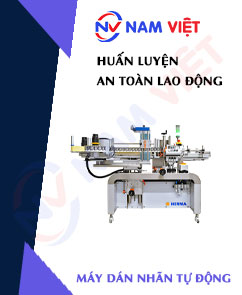
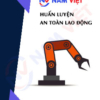
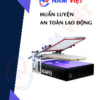




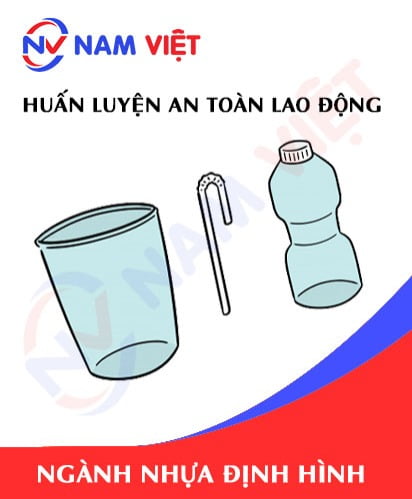
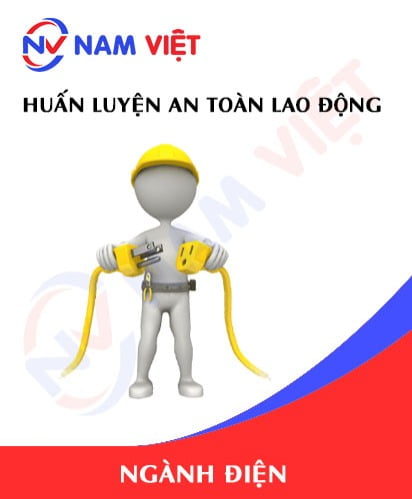


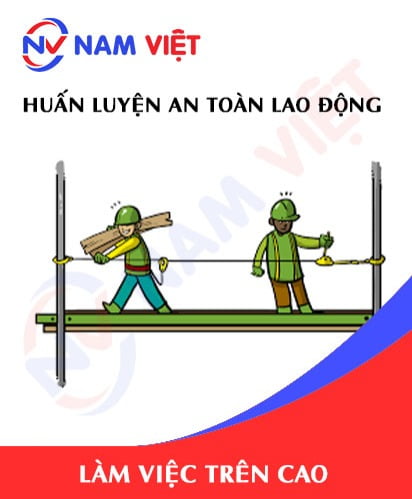

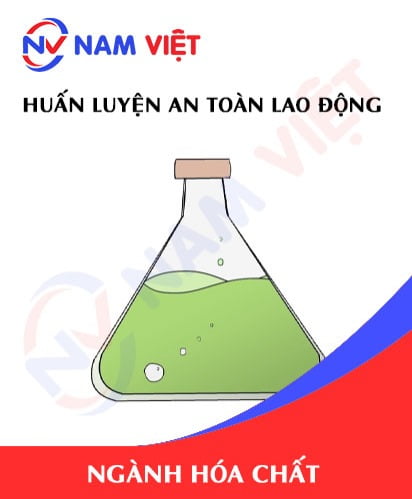
Review Occupational safety training for operating automatic labeling machines.
There are no reviews yet.